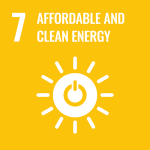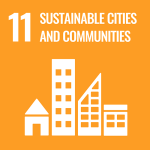
Research impact Australian electricity price dynamics: The impact of renewable energy
Following ambitious renewable energy targets set by state and federal governments to achieve carbon neutrality by 2050, Australia is leading globally in the transition to renewable energy generation. This research explores how the rapid uptake of wind and solar generation has impacted spot electricity prices in the Australian National Electricity Market.
The challenge
Ten times greater than the global average. As of 2019 that’s the rate at which the use of variable renewable energy (VRE) is increasing in Australia as we aim to meet net zero emissions by 2050. This capacity should come as no surprise, with our sunny climate and stretches of coastline not only good for tourism: but solar and wind energy generation. While the use of VRE has great potential to lower emissions and energy prices in Australia, this rapid uptake is not without concerns: with the Australian National Electricity Market (NEM) facing challenges in the assessment and management of electricity price volatility.
This research explores the impact of wind and solar generation on electricity price dynamics in the NEM. The research team aim to uncover the challenges VRE presents to the stability of electricity prices – uncovering evidence to support policy adjustments that better support Australia’s transition to net zero by 2050.
Solution
Exploring this issue, the research team analysed the emerging trends in Australian wholesale electricity prices – with a particular focus on solar and wind energy in New South Wales, Victoria, Queensland, South Australia and Tasmania. The team assessed daily data from NEM; modelling prices and volatility simultaneously, while also taking into consideration the influence of other variables (such as energy consumption, gas prices and cross-border electrical grid interconnectors).
Outcome and impact
The research and subsequent findings present an evidence base to support government in making policy adjustments to increase the correlation between VRE output and electricity demand. In addressing this issue, the research team suggest:
Increased investment in fast-start, firm, and flexible (dispatchable) energy sources to effectively counterbalance the fluctuating nature of VRE output – particularly in coal-reliant regions.
Two-sided market reforms to increase market flexibility; allowing supply and demand sides to participate in the price setting process (not just suppliers).
Small-scale renewable energy schemes and state-based policies to support PV-plus battery systems – enabling owners of rooftop solar panels to store extra generation during the day and export later in the evening to meet peak demand.
Cross-border interconnectors to solve the intermittency of variable renewable energy – allowing states to pool and share their available generation capacities.
Appropriate measures to curtail rooftop solar generation, especially via dynamic/flexible export management, to effectively absorb all excess rooftop generation and maintain system security.
Research outputs
Journal articles
Mathias Mwampashi, M., Sklibosios Nikitopoulos, C., Konstandatos, O. & Rai, A. (2021). Wind generation and the dynamics of electricity prices in Australia. Energy Economics. DOI: 10.1016/j.eneco.2021.105547
Mathias Mwampashi, M., Sklibosios Nikitopoulos, C., Rai, A. & Konstandatos, O. (2022). Large-scale and rooftop solar generation in the NEM: A tale of two renewables strategies. Energy Economics. DOI: 10.1016/j.eneco.2022.106372
Media
Sklibosios Nikitopoulos, C., Rai, A. & Mathias Mwampashi, M (2022). 4 ways to stop Australia’s surge in rooftop solar from destabilising electricity prices. The Conversation.
Mazengarb, M. (2020). Wind lowers energy prices, but adds to volatility without firming. Renew Economy.
Booth, E. (2021). Gone with the wind: how wind power has affected electricity prices and volatility. Energy Magazine.
Sklibosios Nikitopoulos, C., Rai, A. & Mathias Mwampashi, M (2022). Four ways to stop Australia’s surge in rooftop solar from destabilising electricity prices. Energy Source & Distribution.
Meet the research team

Christina Nikitopoulos Sklibosios
Associate Professor
Finance Department
Explore Dr Nikitopoulos Sklibosios’ research
This research included collaboration with external partners.
- Dr Muthe Mathias Mwampashi, former PhD student, University of Technology Sydney
- Dr Alan Rai
- Dr Otto Konstandatos
Collaborate with us
Find out about research collaboration with the UTS Business School.
Research impacts
United Nations Sustainable Development Goals (UN SDGs)

Ensure access to affordable, reliable, sustainable and modern energy for all

Make cities and human settlements inclusive, safe, resilient and sustainable

Take urgent action to combat climate change and its impacts
